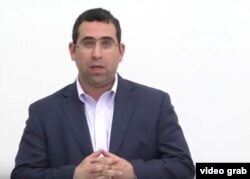The United States is promising more transparency on the country’s sometimes-controversial use of drones to strike at terrorist targets.
White House Counterterrorism advisor Lisa Monaco announced Monday the administration will release an assessment in the “coming weeks” of both combatant and civilian casualties due to drone and other counterterrorism strikes dating back to 2009.
“We know that not only is greater transparency the right thing to do, it is the best way to maintain the legitimacy of our counter terrorism actions and the broad support of our allies,” Monaco said during a speech at the Council on Foreign Relations.
Not from 'areas of active hostilities'
Officials say the report will not include information from drone and counterterror strikes in Iraq, Syria and Afghanistan, all of which are considered “areas of active hostilities.”
White House spokesman Josh Earnest told reporters Monday the release of drone strike data is consistent with President Barack Obama’s commitment to transparency.
“We do see that extremist organizations try to tell a story that is not at all accurate about the impact of our counterterrorism operations,” he said.
“By publishing the numbers and being more transparent, we can make clear that we are not just playing lip service to the idea that our policy puts in place the highest possible standard for avoiding civilian casualties when carrying out these operations,” Earnest said.
Updating figures yearly
U.S. officials said the plan calls for publishing updated drone and counterterror strike casualty figures on a yearly basis.
The White House announcement was met with cautious optimism from the human rights organization Human Rights Watch (HRW), which said the move to release casualty figures is a “good first step.”
“We’ve been calling for this transparency for a very long time,” said HRW Deputy Washington Director Andrea Prasow. “This is a government that started off by saying there were zero civilian casualties from drone strikes.”
But Prasow said numerous questions still need to be answered, including how the U.S. determines civilian casualties, how it differentiates between combatants and civilians and what sort of remedial actions are taken following a strike that results in the deaths of civilians.
“This is transparency, not accountability,” Prasow said, adding that the U.S. also seems to operate under two distinct set of rules for drone strikes – one for conflicts like Afghanistan and Iraq, and one for places like Somalia or Pakistan, where the situation is less clear.
Data on Strikes
There are also doubts that releasing casualty figures from more than seven years of strikes will change anyone’s mind on the use of drones.
“At this stage, I suspect it won't matter,” Long War Journal editor Bill Roggio told VOA. “The opinions on the subject have hardened and increased transparency will do little to change this.”
Long War Journal has been keeping an ongoing count of combatant and civilian deaths, based on mostly press reports, in both Pakistan and Yemen.
It found that since 2006 in Pakistan there have been 389 strikes, killing 2,797 extremist leaders or operatives and 158 civilians.
In Yemen, since 2002, there have been 135 strikes resulting in an estimated 657 combatant deaths and 105 civilian deaths.
Some academics say the possibility of getting additional data on drone strikes will help in determining the extent to which the U.S. drone policy has worked or not.
“Data is absolutely essential to make that assessment,” said Max Abrahms, a professor of political science at Northeastern University.
“One of the big criticisms of the drone program is that it’s so unregulated and that information has been released in a very ad hoc way,” he said.
“It would be useful to know exactly when the strikes happened and against whom,” Abrahms added. “Then we can match that data against the terrorist group to understand whether [the drone strike] helps to weaken the group in terms of degrading its ability to mount operations.”
White House Correspondent Aru Pande contributed to this report.










